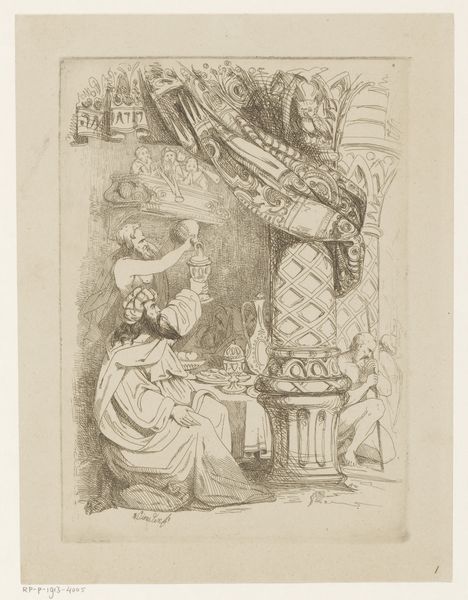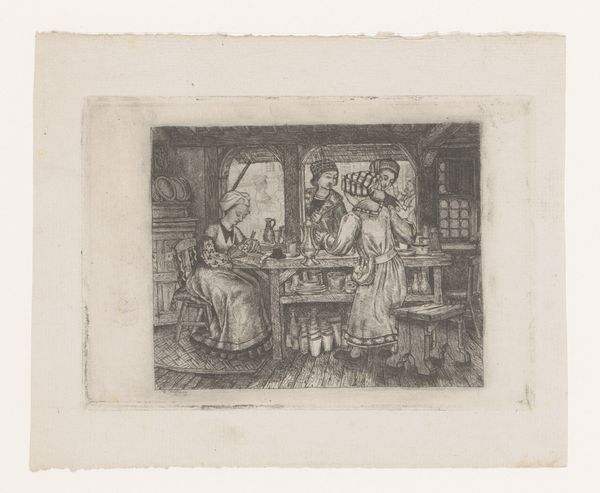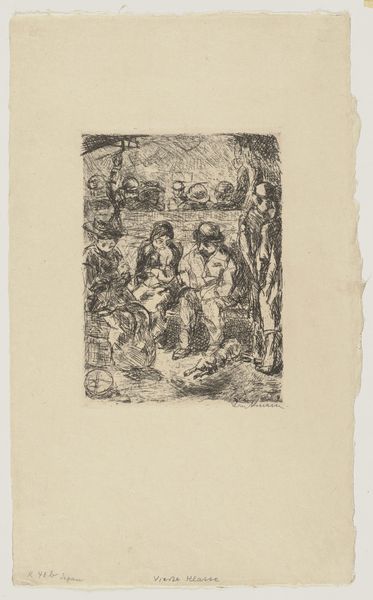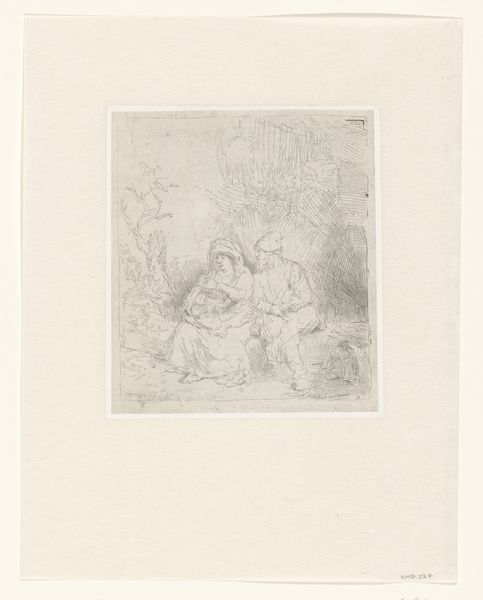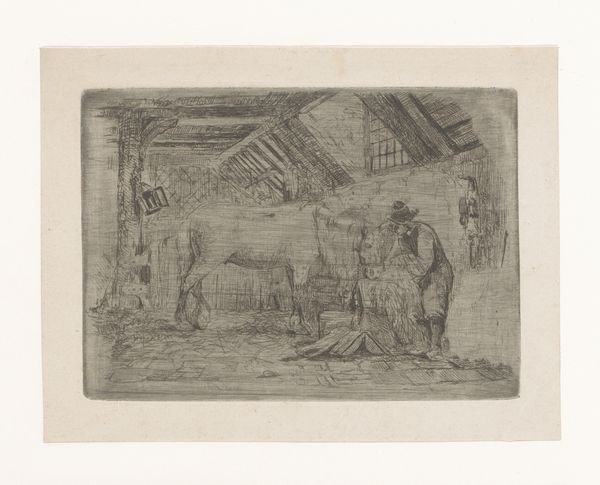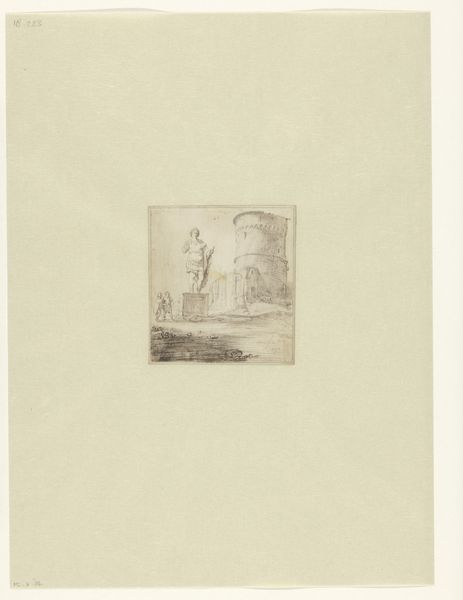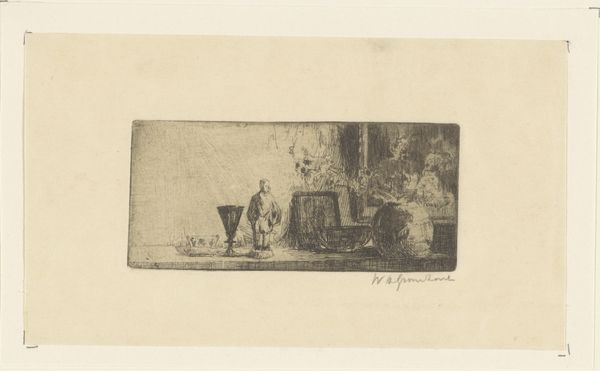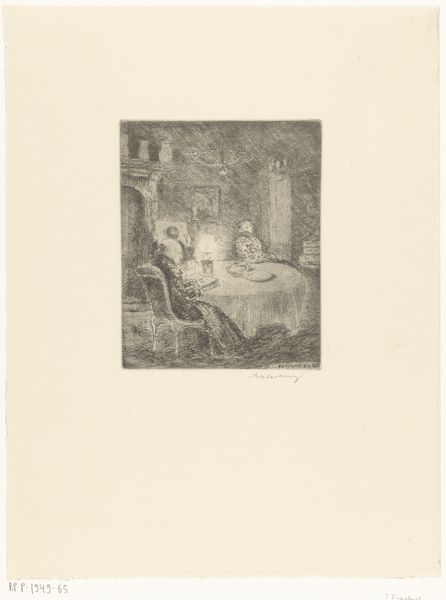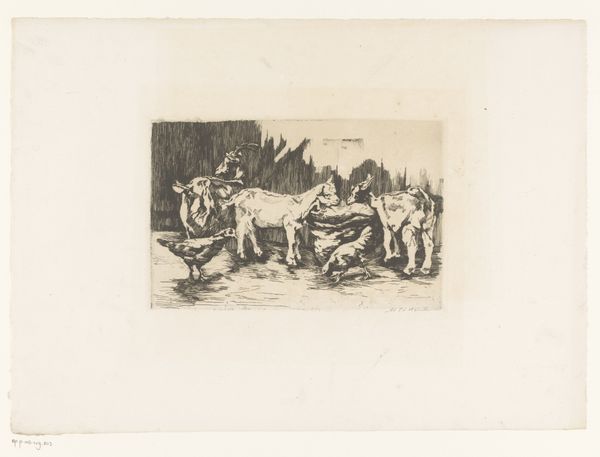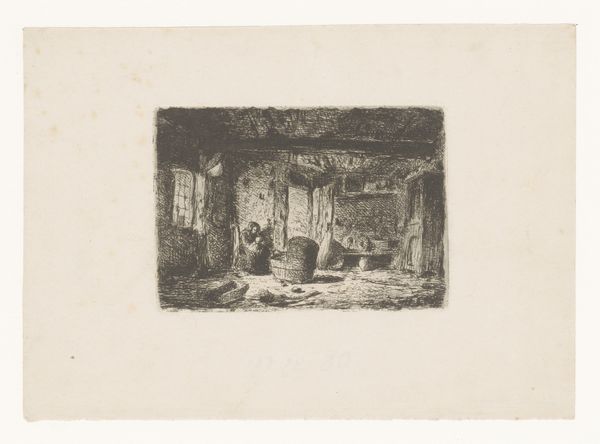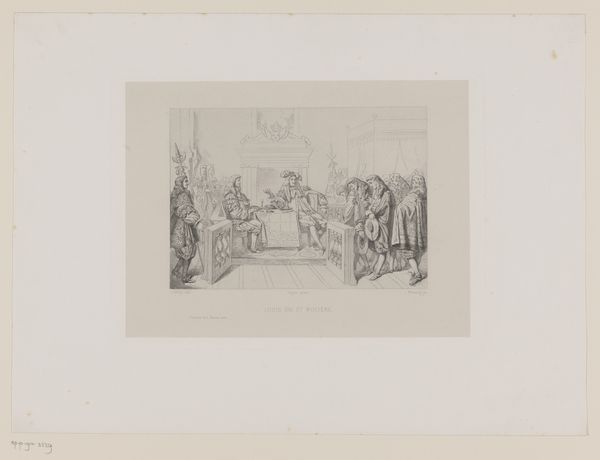
L'assassinat(Reminiscence du crime célèbre de Rodez, où l'agent d'affaires Fualdès a trouvé la mort) 1888
0:00
0:00
drawing, print, etching
#
drawing
#
16_19th-century
#
narrative-art
#
belgian
# print
#
etching
#
figuration
#
symbolism
Copyright: Public Domain
Curator: Let's delve into James Ensor's etching from 1888, "L'assassinat (Reminiscence du crime célèbre de Rodez, où l'agent d'affaires Fualdès a trouvé la mort)," which we hold here at the Städel Museum. Editor: Whew, that's a title and a half! My immediate sense? This feels claustrophobic, even spectral. All these tall, pointed hats towering over a scene of violence...it’s unsettling, like a nightmare filtered through a macabre carnival. Curator: Exactly. The Rodez murder, a sensational crime of its time, becomes a stage for Ensor's sardonic commentary on bourgeois society and its hypocrisy. The figures, particularly those menacing, masked individuals surrounding the body, take on grotesque characteristics. They wear the faces of power but engage in barbaric acts. Editor: Those hats, though! Are they dunce caps? Court jesters? They remind me of Ku Klux Klan hoods in a deeply disturbing way. I get the sense that they want to cover everything with their dark secrets. Curator: The pointed hats are certainly a striking feature, and yes, they have been interpreted in diverse ways. In one light, it’s hard not to feel how those towering conical hats become emblems of moral failing. But I find it hard to ignore that such "allegory" still fails to take complete account of power’s historical role in real murder! And even harder not to feel it now. Editor: The lines in this etching are incredibly chaotic. All these tangled and scratchy markings suggest more than a violent scene – maybe a society grappling with moral decay. What if all this moral degradation isn’t an isolated criminal act, but some broader malaise poisoning the well? Curator: I completely agree; that malaise speaks to the role that sensationalized media played in propagating this crime. This piece serves as a critique of the media frenzy and public fascination with such acts. Editor: Seeing Ensor process public spectacle in this small etching opens to many big issues of moral decay! I never thought a murder scene could evoke so many threads of political struggle. Thanks! Curator: Likewise; exploring art that engages with collective morality is so urgent!
Comments
No comments
Be the first to comment and join the conversation on the ultimate creative platform.

